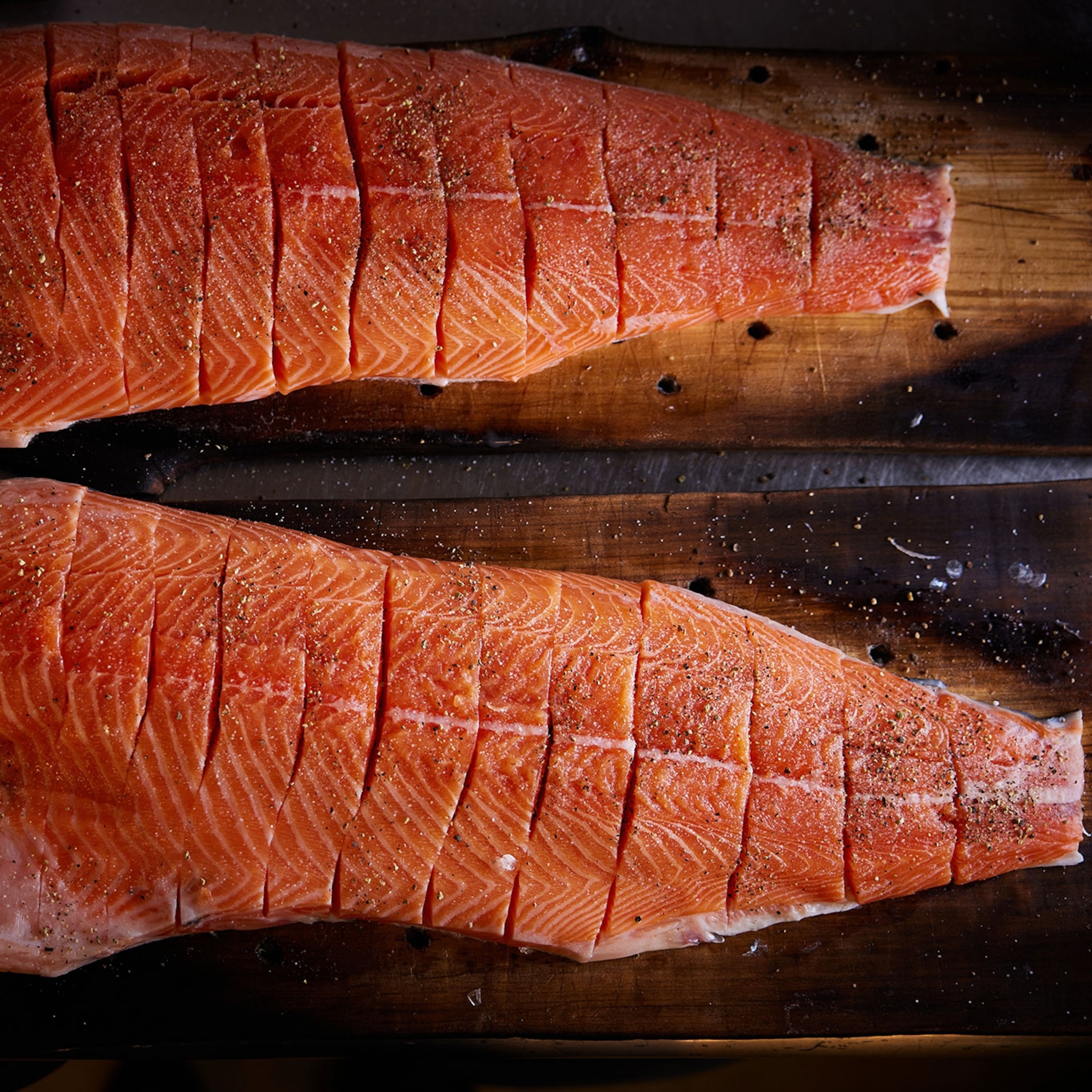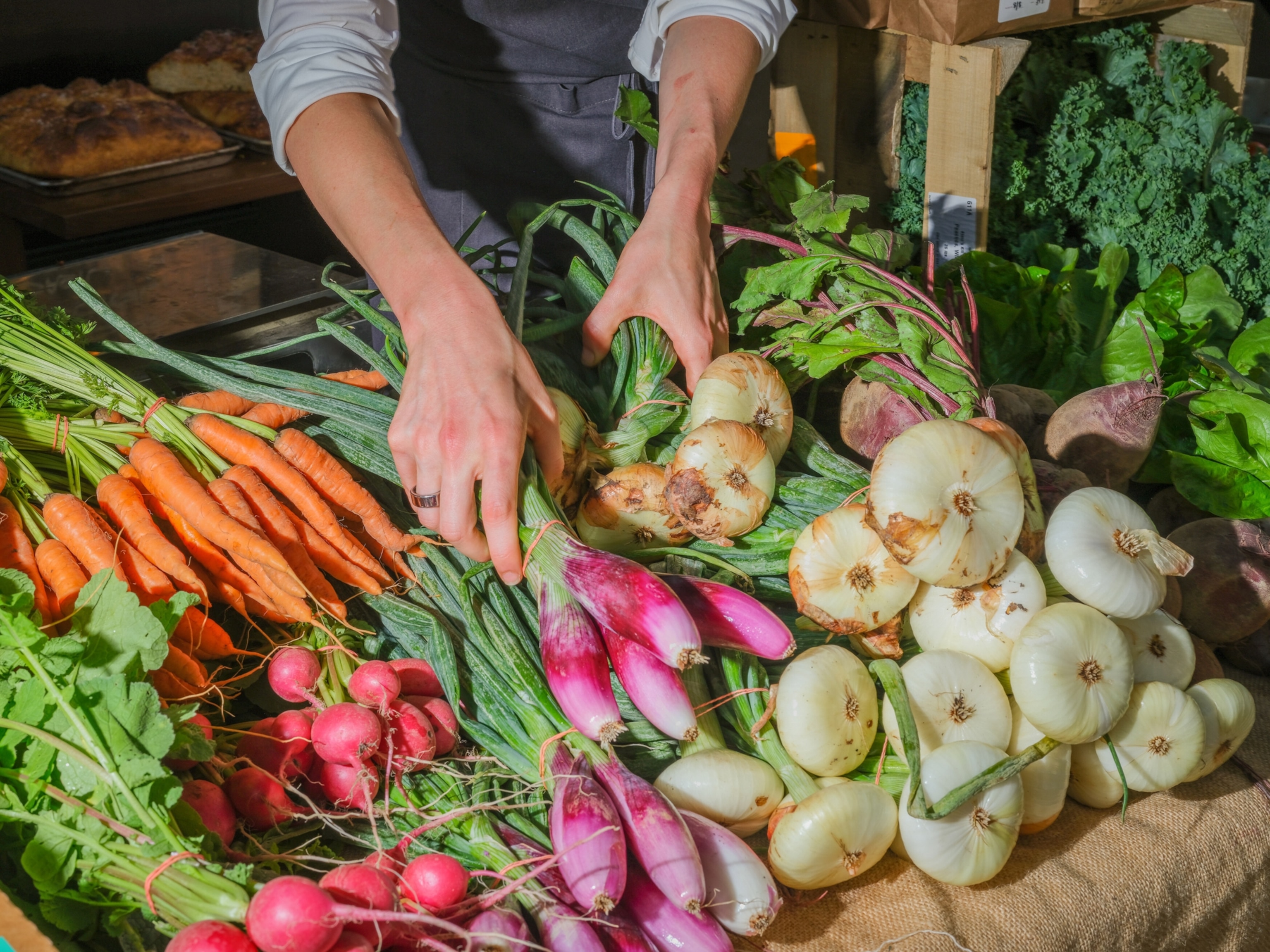
Harnessing the Power of Poo: Pig Waste Becomes Electricity
Farmers and power companies are benefiting from a new source of energy that used to pollute our waterways. But how are the pigs faring?
Things have come a long way since George Orwell penned his paean to the almighty pig in his 1945 classic Animal Farm.
Orwell's animals, of course, were stand-ins for the power-hungry totalitarians of his day. But in my hog-crazy home state of North Carolina, the all-powerful pork industry has now partnered with Duke Energy to use pigs to produce power for the people—enough to electrify more than 800 homes a year.
The target of the effort is a cluster of Concentrated Animal Feeding Operations (CAFOs), large, confined—and controversial—hog houses. More than 2,100 of these factory farms now dot the state, along with their putrid open-waste lagoons, some as large as soccer fields.
Industry critics have estimated that the 2.3 million hogs in Duplin County—the pork mother lode for $14 billion meatpacking goliath Smithfield Foods—generate twice as much waste each day as the city of New York. The county alone boasts more than 500 feeding operations.
Other critics target the CAFOs more broadly, saying that pasture raising produces less waste to begin with, is more humane, and results in a tastier product.
A Brewing Solution
North Carolina's hog farms made national news in 1999, when Hurricane Floyd flooded much of eastern North Carolina, flushing lagoons, drowned hogs, and all into the local Pamlico, Neuse, and Cape Fear Rivers. It created such a mess that the state passed a moratorium on new hogs farms and lagoons that's still in effect. But the farms remain the target of a slew of nuisance, health, and environmental lawsuits by neighbors and nonprofit groups.
To engineer Gus Simmons, however, the lagoons have less to do with waste and more to do with wasted energy. Most of the emissions, as well as the bulk of the stench coming off the lagoons, is methane, that ubiquitous, clean-burning fuel that's also a potent greenhouse gas. According to the UN's Food and Agriculture Organization, the world's livestock contribute 14.5 percent of annual global greenhouse gas emissions.
Pig and dairy farmers have been capturing that gas since the energy crisis of the 1970s. The first methane collectors were installed on farms in Iowa, and the gas was used mostly to heat or generate electricity for the barns—or simply reduce the odor. But the process was pretty inefficient up until recently.
Simmons and his colleagues at the Wilmington, N.C.-based company Optima KV have designed anaerobic biodigesters that create biogas from hog waste, which is 65 percent methane. Simmons initially plans to put digesters at five farms in Duplin County at no cost to the farmers, pumping the gas to a centralized facility, where it will be upgraded to pipeline quality.
The carbon-neutral gas (compared to noncaptured lagoon emissions) will then flow into a major gas pipeline feeding two of Duke Power's combined-cycle power plants in the area. Under North Carolina's Renewable Energy and Efficiency Portfolio Standard, the utility is required to supply a portion of their renewable energy from swine waste, although such projects have been slow to materialize.
Simmons' company is not new to the pigwaste-energy business. It built a system for Duke Energy, Duke University, and Google (which shared the carbon credits), at a hog farm near Yadkinville in western North Carolina five years ago that's still going strong. The new Duplin County system is scheduled to be up and running by mid-2017.
"The system provides several benefits to the farmers," Simmons says. "They essentially get primary sewage treatment for the waste, and it greatly improves the odor from the farms. We monitor noxious odors at the Yadkinville farm with olfactometers at the property line, and in five years they've yet to violate thresholds set by the state." Moreover, farmers get compensated for their waste.
Unfortunately, they will still have to deal with the leftover brew in the lagoons, which is typically sprayed on or injected into the soil on surrounding farmland, often leading to nutrient and heavy-metal pollution in nearby creeks and rivers, according to the USGS.
A Happier, Tastier Pig?
But just an hour down the road from the proposed pig-power plant, Silvana Pietrosemoli-Castagni, a research associate in the animal science department at North Carolina State University, is tackling those issues head on, as well as the far thornier issue of animal welfare associated with CAFOs. In North Carolina, as well as most other states, CAFOs are exempt from animal cruelty laws.
Pietrosemoli-Castagni and her colleagues at the Center for Ecological Farming Systems in Goldsboro, North Carolina, are studying pasture-raised pigs and rotational grazing similar to traditional hog farming in Spain and Italy that produce some of the most sought-after pork in the world.
"When pigs are outdoors they can express most of their natural behavior," she says. "They are social animals, like humans, and on pasture they are allowed to be close to their families."
Though less efficient than CAFOs, Pietrosemoli-Castagni says the system has other benefits. The pig's manure improves soil quality, without the energy needed to pump or spread it, and pasture-raised pigs tend to have lower saturated fat, higher intramuscular fat, higher levels of some nutrients, and even, some say, better flavor.
Though life-cycle assessments for different pork producing systems are hard to compare, several European studies suggest pasture-based systems may have lower emissions than conventional CAFOs, particularly when emissions from imported feed grain and carbon sequestration in the soil are included. Even though they produce fewer animals, farmers can get a premium price in the marketplace for pasture-raised pigs that helps make up the difference. And, most importantly for a growing number of consumers, the pigs seem happier, says Pietrosemoli-Castagni. "I can't confirm that they are happier, but I think they are."
Whatever the reason, pasture-raised pigs seem to be catching on. A recent survey of niche meat producers in North Carolina (including pasture-based swine operations) found nearly 70 percent plan to expand. Even CAFOs can improve, says Pietrosemoli-Castagni. "I feel the industry is really interested in changing," she says. "I am seeing a lot of research focused on making the industry more sustainable. So I think we are moving forward."
Joel K. Bourne, Jr. is the author of The End of Plenty: The Race to Feed a Crowded World. Follow him on Twitter.








